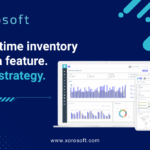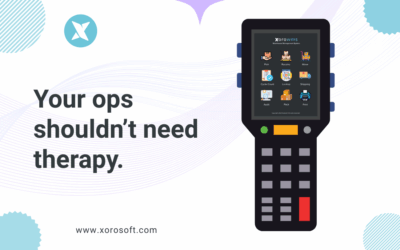
Introduction to cross-docking and its importance in warehouse operations
Cross-docking is a logistics strategy that has gained significant importance in modern warehouse operations. It involves unloading products from incoming trucks or containers and immediately loading them onto outbound trucks, with little to no storage time in between. This technique allows for a streamlined and efficient flow of goods, reducing handling costs and improving delivery times.
The key to successful cross-docking lies in effective coordination and synchronization of various activities within the warehouse. This is where a Warehouse Management System (WMS) comes into play. A WMS is a software application that helps manage and control warehouse operations, including inventory management, order fulfillment, and transportation management. Implementing a WMS in cross-docking operations can bring numerous benefits and revolutionize your warehouse efficiency.
What is a Warehouse Management System (WMS)?
A Warehouse Management System (WMS) is a software solution designed to optimize and automate warehouse operations. It provides real-time visibility into inventory levels, locations, and movement, enabling efficient management of resources and processes. A WMS typically includes functionalities such as receiving, putaway, picking, packing, and shipping, along with advanced features like inventory tracking, order management, and labor management.
By implementing a WMS, warehouses can improve inventory accuracy, reduce stockouts and overstock situations, and enhance order fulfillment rates. The system ensures that the right products are in the right place at the right time, minimizing errors, and improving overall operational efficiency. With a WMS, warehouses can streamline their cross-docking operations and achieve maximum efficiency.
Benefits of implementing a WMS in cross-docking operations
Implementing a Warehouse Management System (WMS) in cross-docking operations can bring several significant benefits. Firstly, a WMS provides real-time visibility into inventory levels, allowing for accurate tracking of incoming and outgoing shipments. This visibility enables better planning and coordination, reducing the risk of stockouts or excess inventory. By having a clear view of available stock, warehouses can make informed decisions, optimize storage space, and improve order fulfillment rates.
Secondly, a WMS improves operational efficiency through automated processes and streamlined workflows. With a WMS, warehouses can automate repetitive tasks like data entry, inventory counting, and order processing, eliminating manual errors and saving time. The system can also optimize putaway and picking processes, reducing travel time and maximizing labor productivity. By implementing a WMS, warehouses can achieve faster turnaround times, improved order accuracy, and increased throughput.
Lastly, a WMS enhances customer satisfaction by enabling faster and more accurate order fulfillment. With real-time inventory visibility and optimized processes, warehouses can ensure timely delivery of products, reducing lead times and meeting customer expectations. A WMS can also provide customers with up-to-date order status and tracking information, enhancing transparency and building trust. By improving customer satisfaction, warehouses can boost their reputation, increase customer loyalty, and gain a competitive edge.
Features and capabilities of XoroWMS, a leading Warehouse Management System
XoroWMS is a leading Warehouse Management System (WMS) developed by Xorosoft, a renowned provider of logistics software solutions. This state-of-the-art system offers a wide range of features and capabilities to revolutionize your cross-docking operations.
One of the key features of XoroWMS is its advanced inventory management functionality. The system provides real-time visibility into inventory levels, locations, and movements, allowing for accurate tracking and management of stock. With XoroWMS, you can easily monitor stock availability, identify low-stock situations, and plan replenishments effectively. The system also supports automated stock counting and cycle counting, ensuring inventory accuracy and reducing the need for manual intervention.
Another crucial capability of XoroWMS is its optimized putaway and picking processes. The system intelligently assigns storage locations based on product characteristics and demand patterns, minimizing travel time and maximizing space utilization. XoroWMS also utilizes advanced algorithms to optimize picking routes, reducing the distance traveled and improving labor productivity. By implementing XoroWMS, warehouses can achieve faster order processing, reduced error rates, and improved operational efficiency.
Furthermore, XoroWMS offers comprehensive reporting and analytics capabilities. The system generates detailed reports and performance metrics, providing valuable insights into warehouse operations. With XoroWMS, you can analyze key performance indicators (KPIs) such as order cycle time, order accuracy, and labor productivity. These insights enable data-driven decision-making, allowing you to identify areas for improvement and implement corrective actions. XoroWMS empowers you with the information you need to optimize your cross-docking operations and drive continuous improvement.
How Xorosoft WMS can revolutionize your cross-docking operations
Xorosoft WMS is a game-changer for cross-docking operations, offering a comprehensive solution to maximize efficiency and productivity. With its advanced features and capabilities, Xorosoft WMS can revolutionize your warehouse operations.
One of the key advantages of Xorosoft WMS is its seamless integration with other systems and technologies. The system can integrate with your existing enterprise resource planning (ERP) system, transportation management system (TMS), and other software applications, enabling smooth data exchange and process synchronization. This integration eliminates the need for manual data entry and ensures accurate and up-to-date information across all systems. Xorosoft WMS acts as a central hub, connecting various components of your cross-docking operations and facilitating efficient coordination.
Another significant benefit of Xorosoft WMS is its scalability and flexibility. The system can accommodate warehouses of all sizes and handle varying levels of complexity. Whether you have a small cross-docking facility or a large distribution center, Xorosoft WMS can adapt to your specific requirements. The system supports multi-site operations, allowing you to manage multiple warehouses from a single interface. Xorosoft WMS also offers customizable workflows and business rules, empowering you to tailor the system to your unique processes and preferences.
Additionally, Xorosoft WMS provides comprehensive visibility and control over your cross-docking operations. The system offers real-time dashboards and alerts, enabling you to monitor key performance indicators and take proactive actions. With Xorosoft WMS, you can track inbound and outbound shipments, manage dock schedules, and allocate resources effectively. The system also supports advanced analytics and predictive modeling, helping you identify trends, forecast demand, and optimize your operations. Xorosoft WMS empowers you with the tools and insights you need to make data-driven decisions and stay ahead of the competition.
Steps to implementing a WMS in your cross-docking operations
Implementing a Warehouse Management System (WMS) in your cross-docking operations requires careful planning and execution. Here are the key steps to follow for a successful implementation:
-
Assess your current operations: Evaluate your existing cross-docking processes, identify pain points and areas for improvement. Understand your specific requirements, such as inventory tracking, order fulfillment, and labor management.
-
Define your objectives: Clearly define your goals and objectives for implementing a WMS. Determine the key performance indicators (KPIs) you want to improve, such as order cycle time, order accuracy, and labor productivity.
-
Research and select a WMS: Conduct thorough research and evaluate different WMS options available in the market. Consider factors such as functionalities, scalability, integration capabilities, and customer support. Choose a WMS that best aligns with your requirements and objectives.
-
Plan for implementation: Develop a detailed implementation plan, including timelines, resource allocation, and training requirements. Collaborate with your WMS provider to define the scope of the project and ensure a smooth transition.
-
Prepare your data: Cleanse and organize your data to ensure its accuracy and consistency. Migrate your existing inventory, customer, and order data into the WMS. Verify the data integrity and perform necessary tests to ensure a seamless transition.
-
Train your staff: Provide comprehensive training to your warehouse staff on how to use the WMS effectively. Ensure that they understand the system’s functionalities, workflows, and reporting capabilities. Encourage their active participation and address any concerns or questions they may have.
-
Pilot and test: Conduct a pilot run of the WMS in a controlled environment to validate its functionality and performance. Test different scenarios and processes to identify any issues or areas for improvement. Make necessary adjustments and refinements based on the feedback received.
-
Go-live and monitor: Once the pilot phase is successful, roll out the WMS across your cross-docking operations. Monitor its performance closely and track the defined KPIs. Continuously analyze the data and make adjustments as needed to optimize your operations.
Key considerations when choosing a WMS for cross-docking
When choosing a Warehouse Management System (WMS) for your cross-docking operations, there are several key considerations to keep in mind:
-
Functionality: Evaluate the functionalities offered by the WMS and ensure they align with your specific requirements. Consider features such as inventory management, order fulfillment, labor management, and integration capabilities.
-
Scalability: Assess the scalability of the WMS to accommodate your current and future needs. Determine if the system can handle increasing volumes, multiple warehouses, and changing business requirements.
-
Integration capabilities: Ensure that the WMS can seamlessly integrate with your existing systems, such as ERP, TMS, and other software applications. The integration should allow for smooth data exchange and real-time synchronization.
-
Ease of use: Consider the user-friendliness of the WMS interface and workflows. The system should be intuitive and easy to navigate, minimizing the learning curve for your warehouse staff.
-
Customizability: Determine the level of customizability the WMS offers. Can you tailor the workflows, business rules, and reports to your specific needs? Customizability allows you to adapt the system to your unique processes and preferences.
-
Customer support: Evaluate the customer support provided by the WMS vendor. Ensure they offer timely and reliable support, including training, troubleshooting, and system updates.
-
Total cost of ownership: Consider the total cost of ownership, including licensing fees, implementation costs, ongoing maintenance, and upgrades. Assess the return on investment (ROI) and calculate the potential cost savings and efficiency gains.
By carefully considering these factors, you can choose a WMS that best meets your cross-docking requirements and sets your warehouse up for success.
Training and support for using Xorosoft WMS
Xorosoft understands the importance of comprehensive training and reliable support when implementing a Warehouse Management System (WMS). They offer a range of training programs and support services to ensure a smooth transition and effective use of Xorosoft WMS.
Xorosoft provides extensive training to your warehouse staff, covering all aspects of the system’s functionalities and workflows. Their training programs are designed to empower your team with the knowledge and skills needed to use Xorosoft WMS efficiently. The training can be customized based on your specific requirements and can be conducted on-site or remotely.
In addition to training, Xorosoft offers ongoing support to address any issues or questions that may arise during the implementation and usage of the WMS. Their support team is readily available to provide timely assistance, troubleshoot problems, and offer guidance. Xorosoft also releases regular updates and enhancements to ensure that you are always leveraging the latest features and capabilities of Xorosoft WMS.
Xorosoft is committed to the success of their customers and strives to build long-term partnerships. They value feedback and actively listen to their customers’ needs, incorporating their suggestions into future product developments. With Xorosoft’s training and support, you can maximize the benefits of Xorosoft WMS and optimize your cross-docking operations.
Conclusion: The future of cross-docking and the role of WMS in optimizing warehouse operations
Cross-docking is a vital strategy in modern warehouse operations, enabling efficient and cost-effective movement of goods. To maximize efficiency in cross-docking, implementing a Warehouse Management System (WMS) is essential. A WMS provides real-time visibility, automates processes, and streamlines workflows, revolutionizing warehouse operations.
Xorosoft WMS, with its advanced features and capabilities, is a game-changer for cross-docking operations. It seamlessly integrates with existing systems, offers scalability and flexibility, and provides comprehensive visibility and control. Xorosoft WMS has proven success stories, helping companies achieve significant improvements in order accuracy, on-time delivery, and labor productivity.
When choosing a WMS for your cross-docking operations, consider factors such









